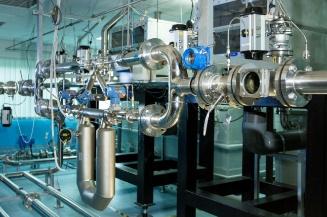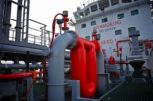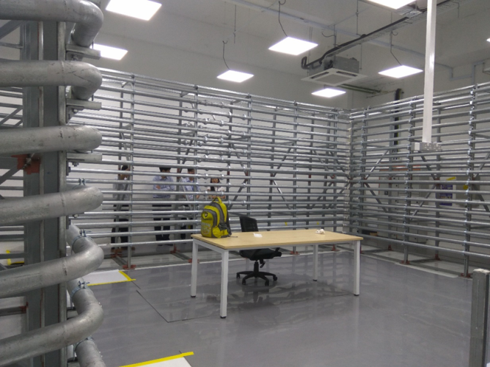PRESSURE & FLOW

INTRODUCTION

Pressure measurement is the analysis of an applied force by a fluid (liquid or gas) on a surface. Pressure is one of the derived values from mass, length and time. Pressure measurement and control is the most used process variable in the process control industry many segments.
In addition, through the pressure it is possible infer a series of other process variables, like level, volume, flow and density. Hence, ensuring the measurements at each industrial application to be accurate is critical and significant. Flow measurement is important to determine the amount of fluid quantities such as water, oil, gas and chemicals to be purchased and sold. Accurate flow measurements are often required, since flow measurements always involve huge amount of quantities that a measurement error of just 0.1% can make a difference of millions dollars. In addition, flow meters for fluid flow measurement have various applications that also affect measurement results including allocation metering, check metering, measurement of process, district heating, and fluid types. Each measurement has their unique conditions and fluid properties that need to be calculated carefully with expertise and sufficient experiences.
LATEST NEWS
NMC Pressure & Flow Lab is expanding to cover the more areas such as the measurement of liquid density and the measurement of vacuum with a wider range. A density working standard traceable to the primary standard reference liquid is in the process of establishment, and a new vacuum system is also under construction.
MEASUREMENT STANDARDS AND DISSEMINATION
The Pressure & Flow Laboratory at NMC has built the facilities for pressure, vacuum, gas, liquid, air velocity measurements and has proactively helped industry to solve industrial measurement issues through measurements and calibration services, consultancy and training as well as study for site measurement issues, developing measurement solutions in the area of pressure, vacuum, and fluid flow measurements. NMC develops, maintains and disseminates the pressure, vacuum fluid flow metrology related national measurement standards in Singapore.
TRAINING COURSES

The PL Laboratory also provides trainings on current and emerging technologies for pressure and flow measurements and monitoring. These trainings also act as a platform to educate scientists and engineers working in the fired on the fundamentals of pressure and flow metrology, and the importance of measurement comparability and traceability for international recognition of measurement and test results.
Trainings conducted in the past:
- Pressure and Flow Measurement for Green Building
- Advance Mass Flow Measurement Technology for Bunkering
INTERNATIONAL COMPARISONS
To ensure the unbroken metrological traceability chain, the PL lab participated in several international comparisons in both the pressure and flow domains. NMC is the active member in the Asia Pacific Metrology Programme (APMP) Technical Committee for Fluid Flow (TCFF).
International measurement standards:
- APMP.M.FF-K3 APMP Key Comparison for Air Speed
- APMP.M.FF-K6.2010 APMP Key Comparison for Low-Pressure Gas Flow
- APMP.M.FF-K6.2018 APMP Key Comparison for Low-Pressure Gas Flow
- Bi-lateral Comparison for Liquid Flow (NMC and VSL)
- Bi-lateral Comparison for Micro Liquid Flow (NMC and CMS)
RESEARCH PROJECTS

The PL Laboratory also carries out R&D and consultancy for industry and other stakeholders to develop and apply pressure and flow measurement techniques for various applications.
Some of the projects in PL laboratory:
- Natural gas transmission pipeline leakage detection
- Technical advisory to design and build up a water flow calibration system
- Venturi-Tube Calibration
INTERESTING STORIES

Have you ever wondered the movement of birds in the air?
The birds which are migrating from one place to another fly in groups. This can be explained by pressure and flow mechanism.
When a bird pushes its wings downward, a high pressure is formed below the wings. This high pressure moves to the low pressure and so the wings move upwards. This makes a bird to fly.
At the tip of bird’s wings, vortices are formed. The bird which is flying next gets a force from the vortices that are formed by the movement of wings of the first bird. So that, it need not have to put more force. Thus more energy is not required for the birds which are following the first bird.
For traveling long distances and to reduce the energy spent, birds use this technique of flying.
A*STAR celebrates International Women's Day

From groundbreaking discoveries to cutting-edge research, our researchers are empowering the next generation of female science, technology, engineering and mathematics (STEM) leaders.
Get inspired by our #WomeninSTEM
